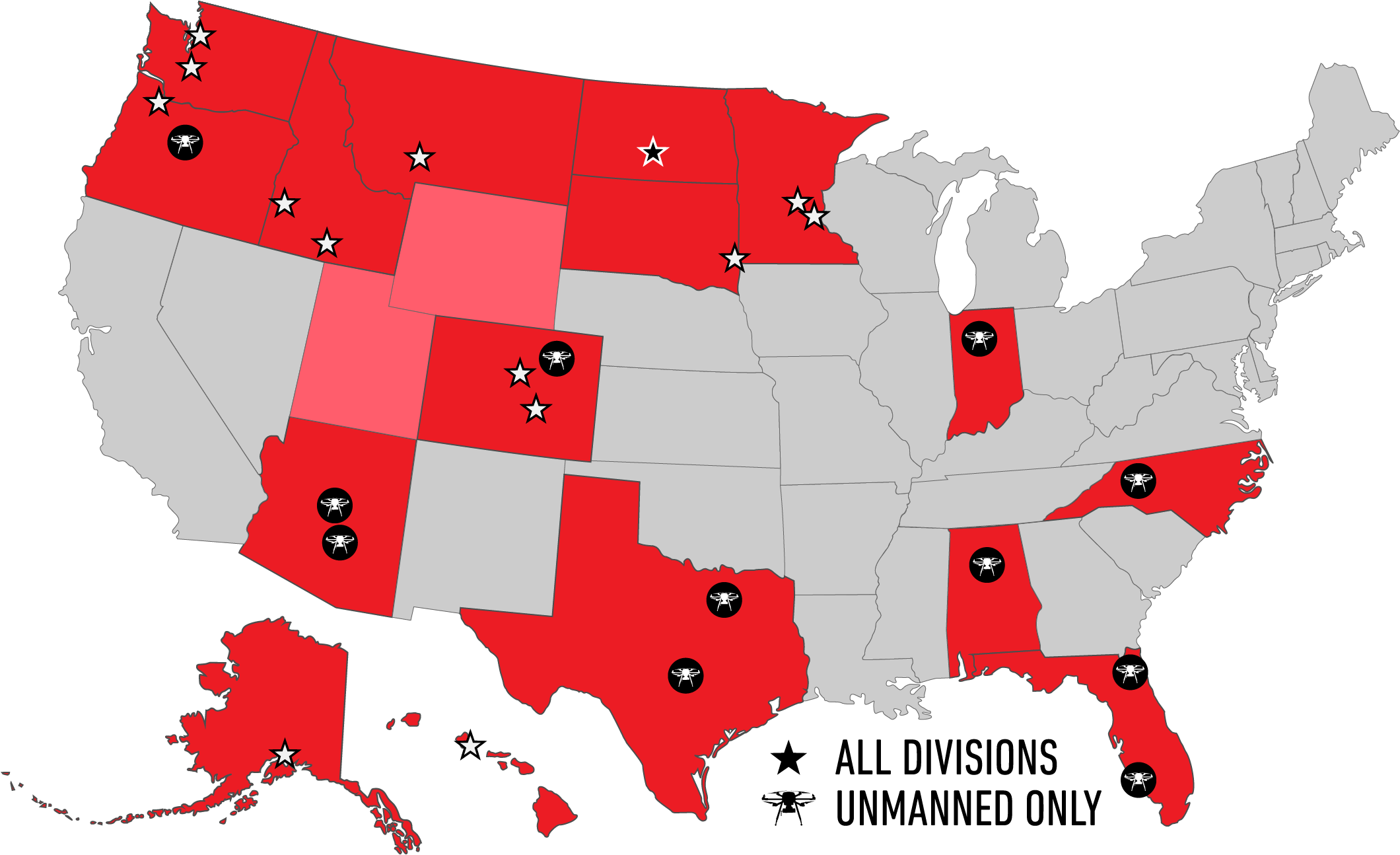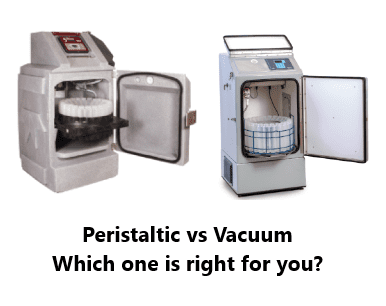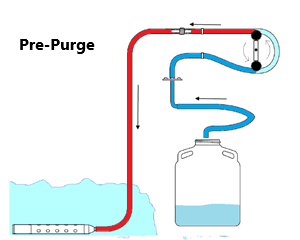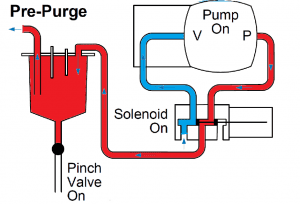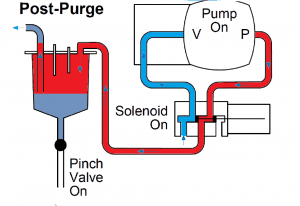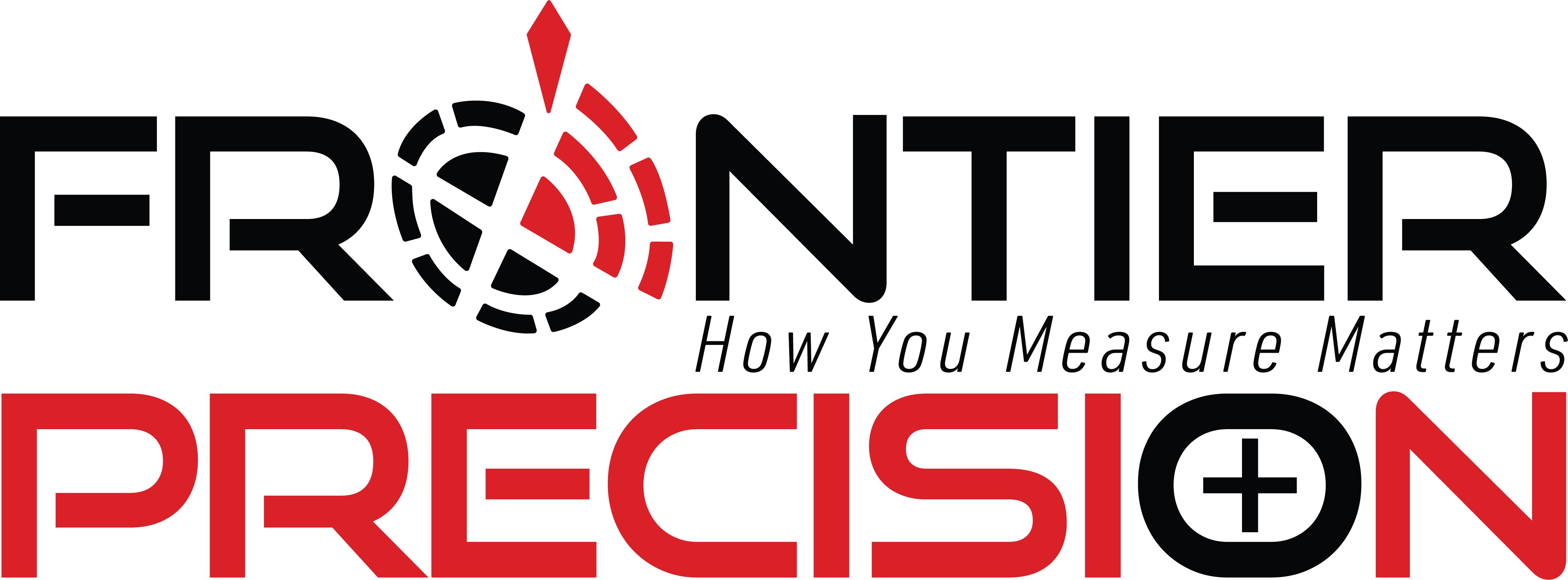An automatic water sampler is essentially an intelligent pump that takes water from a source and deposits it into one or many bottles. Samplers can do this based on time, flow or some other externally measured parameter(s) such as rainfall, water quality, etc.
An autosampler will generally use one of two technologies for pulling a sample: a peristaltic pump or a vacuum pump. A peristaltic pump consists of two or more rollers that turn at high-speed and pinch the pump tubing creating pressure or a vacuum, depending on the direction of rotation, as air is displaced in the tube and replaced by water. Vacuum samplers use a vacuum/compressor to move the water. The vacuum or pressure is controlled by a solenoid valve. The sample is deposited into a sample chamber and either measured volumetrically by electrodes or weighed using a gravimetric process, typically a load-cell.
The Sample Process
The sample process for automatic samplers consists of a pre-sample purge to reduce cross-contamination of the sample. This is followed by either one or multiple rinses of the sample line/chamber, and/or measuring the sample and then depositing it into the sample bottle.
A peristaltic sampler performs this sequence by first running the pump rollers in a counter-clockwise direction. This clears the discharge tubing, pump tubing and suction-line of residual liquid from the last sample. The controller then switches the pump to run in a clock-wise direction pulling the sample to deposit in the container or performing one or many rinses of the suction-line prior to depositing the liquid. The volume is determined by a combination of pump revolutions, volume of the suction-line (inside diameter x length) and a liquid detector. The final action is to run the pump in reverse once again, purging the line and removing residual water.
For a vacuum sampler, the system clears residual water from the last sample by turning the solenoid valve on and closing the pinch-valve below the sample-chamber so the pump provides pressure purging the sampler-chamber and the suction line. When it is time to take a sample the solenoid valve changes direction and a vacuum is created in the sample chamber and suction line, thus pulling the liquid, depositing it in the sample chamber where it is measured or weighed. The pinch valve below the sampler chamber is then opened and the measured liquid is deposited into the bottle. After the sample is deposited the solenoid valve is turned on, the pinch valve closed, and the sampler again creates pressure to purge the sample chamber and suction-line.
There are many factors to consider when choosing an auto-sampler. These may include but are not limited to: portable vs. stationary, distance from sampler to source water, desired accuracy and sample size, regulatory agency- requirements, sample source (e.g. open-channel or pressurized pipe) power requirements, etc.
Vacuum Advantages
-Sample accuracy/volume repeatability/small volume sampling – vacuum samplers can generally provide an accuracy of +/- 5ml compared to +/- 10ml for peristaltic pump samplers. They can do this regardless of interfering factors such as head height, bubbles or other adverse conditions. They are also better at providing accurate small samples (e.g. < 40 ml).
-Transport Velocity – vacuum samplers can generally provide much higher transport velocities over longer distances (e.g. >50’) and higher vertical lift (>23’). They can also provide greater purge pressures. This may be important for hazardous location sampling where a sampler needs to be located far outside of the hazardous area.
There has been some suggestion that greater purge and suction pressure lead to greater disturbance of the bedload; however, the reality and extent of this has never been adequately quantified.
-No Consumable parts – peristaltic pump samplers require regular changes of the pump tubing which is worn by the pump rollers. The longer the suction-line and the more rinses, the faster this tubing gets worn. Vacuum samplers have no consumable parts.
Peristaltic Advantages
-Easier and faster setup – peristaltic pump samplers require less setup to obtain an accurate sample. Just properly measure and place the suction line/strainer, input this information into the sample controller, check and fine-tune the calibration using a graduated cylinder This may not be a big issue with stationary samplers where the setup and calibration is generally only performed once; however, it could be a big deal when using portable samplers that are commonly moved around for short periods of time and used for different applications requiring different volumes of water.
-Less Expensive/Simple – Peristaltic pump samplers have fewer and less expensive parts and are generally simpler to operate and maintain.
-More Rugged -Peristaltic pump samplers have fewer parts and are more enclosed than vacuum samplers so they will withstand more handling and jostling around in the back of a truck. This is especially important for portable samplers.
-Pressurized line sampling – peristaltic pump samplers can sample from a pressurized line using an accessory component. Vacuum samplers have no means to hold back water under pressure and should not be used with pressurized lines.
-Toxic Sampling – using a Teflon lined intake hose is generally the only modification you have to make when using a portable sampler to sample for toxins. With a vacuum sampler you have to address all wetted parts, most notably the sample chamber.
-Cross-contamination – the jury may be out on this. Intuitively one may think that because a peristaltic pump sampler only needs to purge and rinse the suction line and pump tubing that one would have less cross-contamination than a vacuum compressor sampler which needs to purge and rinse the much larger measurement chamber. A decades old study by the USGS in Madison, WI indicated there was really no perceivable difference in cross-contamination between a vacuum and peristaltic pump sampler. This is possibly related to the higher purge pressure in a vacuum sampler.
Summary – Which is right for me
The first question to ask is do you need a portable or stationary sampler? If you need a portable sampler that will moved around frequently for shot jobs and exposed to possible rough handling you may want to consider a peristaltic pump sampler. Next, think about your potential sampling site(s), if you have a high vertical lift and/or abnormally long suction line lengths, and are concerned about accurate representation of suspended solids, a vacuum sampler may be the best choice. If you need sample accuracy better than +/- 10ml, and/or are routinely taking small samples, less than 40 ml, then consider a vacuum compressor sampler. There are also other factors to consider such as budget (peristaltic samplers are generally less money), as well as industry standards and regulatory acceptance. Most (~95%) of portable sampler world-wide are peristaltic. Also, most stationary refrigerated samplers in the U.S. are peristaltic where stationary, refrigerated vacuum samplers are more popular in Europe. Also, consider how much time you have for setup, importance of ease of use, as well as long- term maintenance and costs.
Frontier Precision provides Teledyne ISCO samplers in the U.S. Teledyne ISCO has a complete line of portable and refrigerated peristaltic and vacuum compressor samplers. You can find our sampler options at our website. or contact Steve Combe, (801)-791-3407 or Martin Soto, (208-324-8006). ISCO is hosting a webinar on vacuum samplers on October 31, 2019 at 9:00 am (Mountain Time). You can register for the webinar here.
Products
Technical Services
If you require customized technical services and training, please contact Frontier Precision at 800-359-3703 or reach out to a local Frontier Precision location.
Training and Events
Frontier Precision offers affordable regularly scheduled certified training classes, online eLearning, webinars, as well as custom training options to meet your specific training needs.
About Frontier Precision
Contact Frontier Precision
